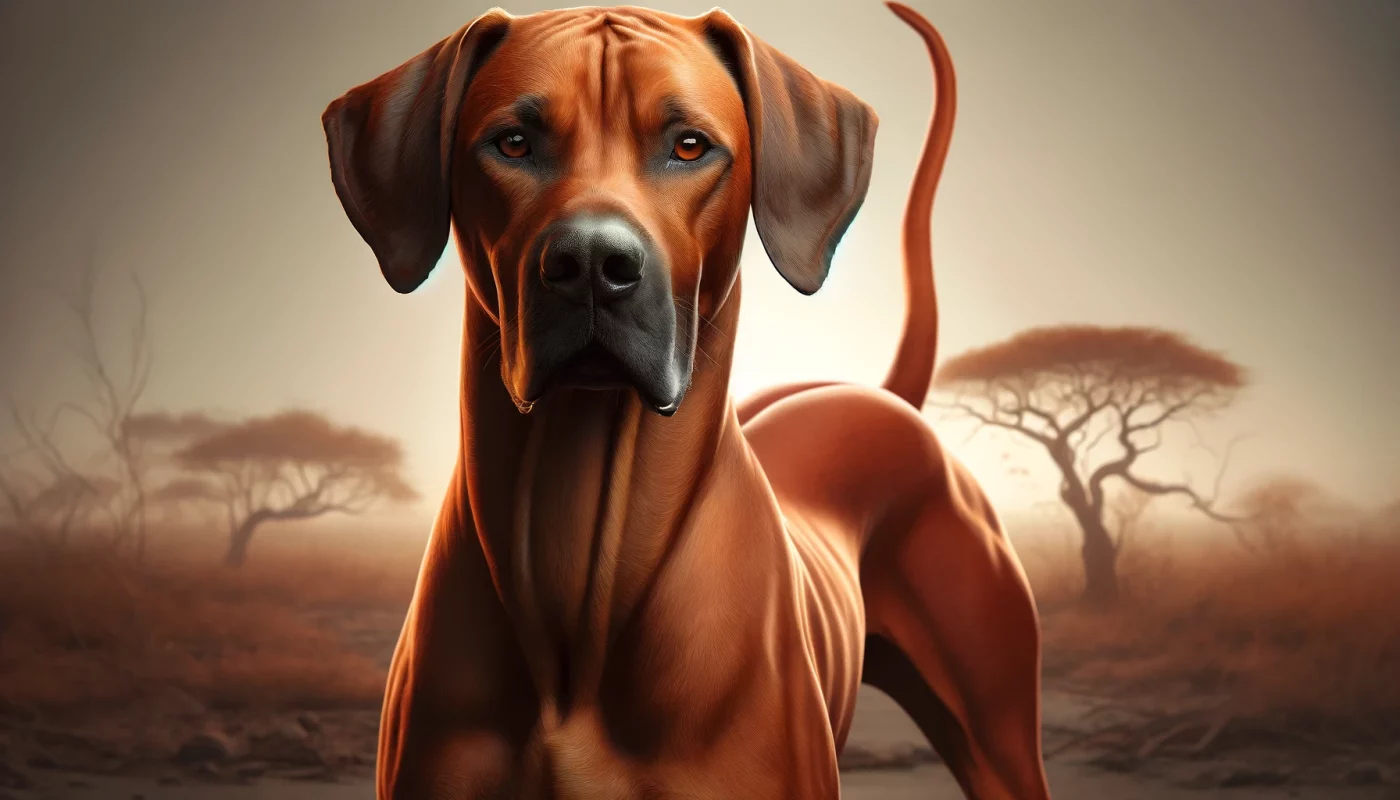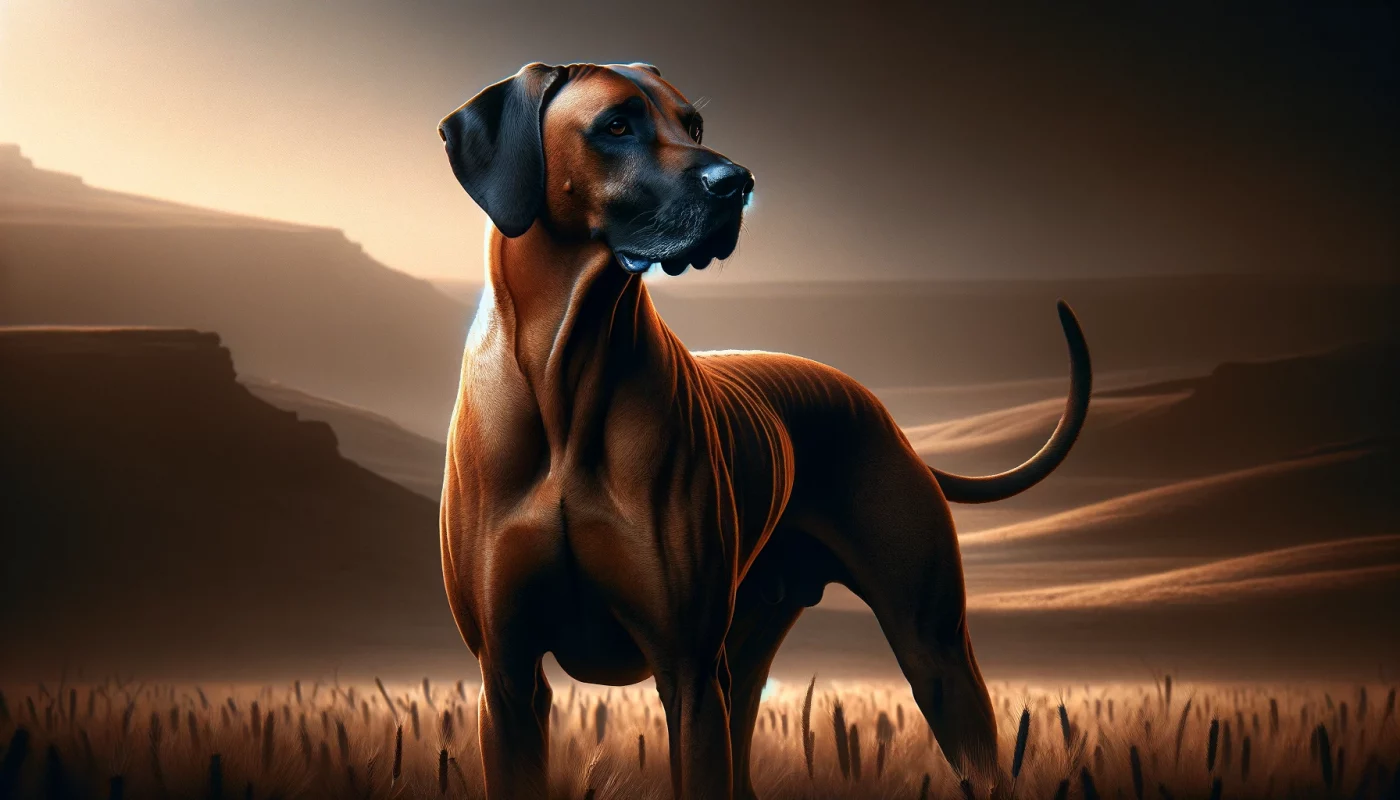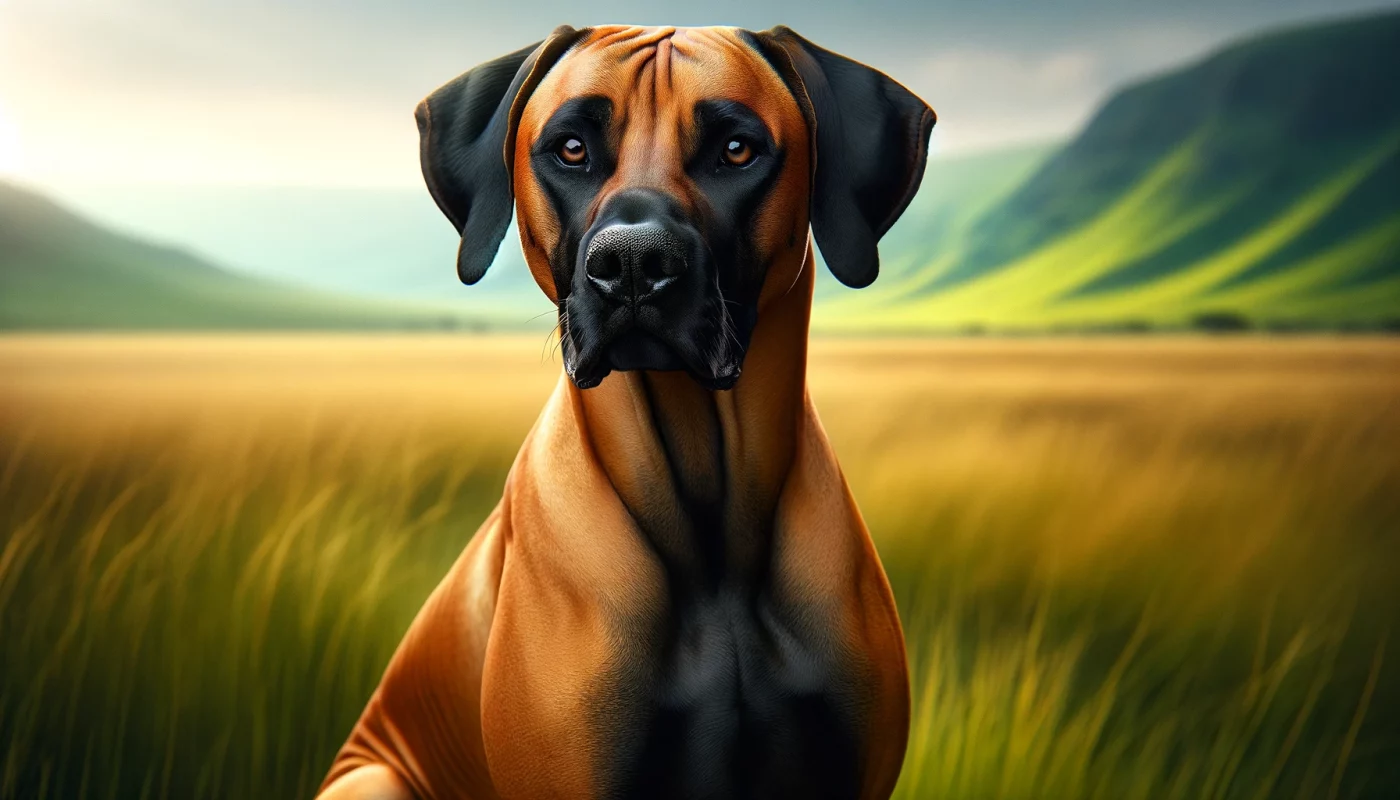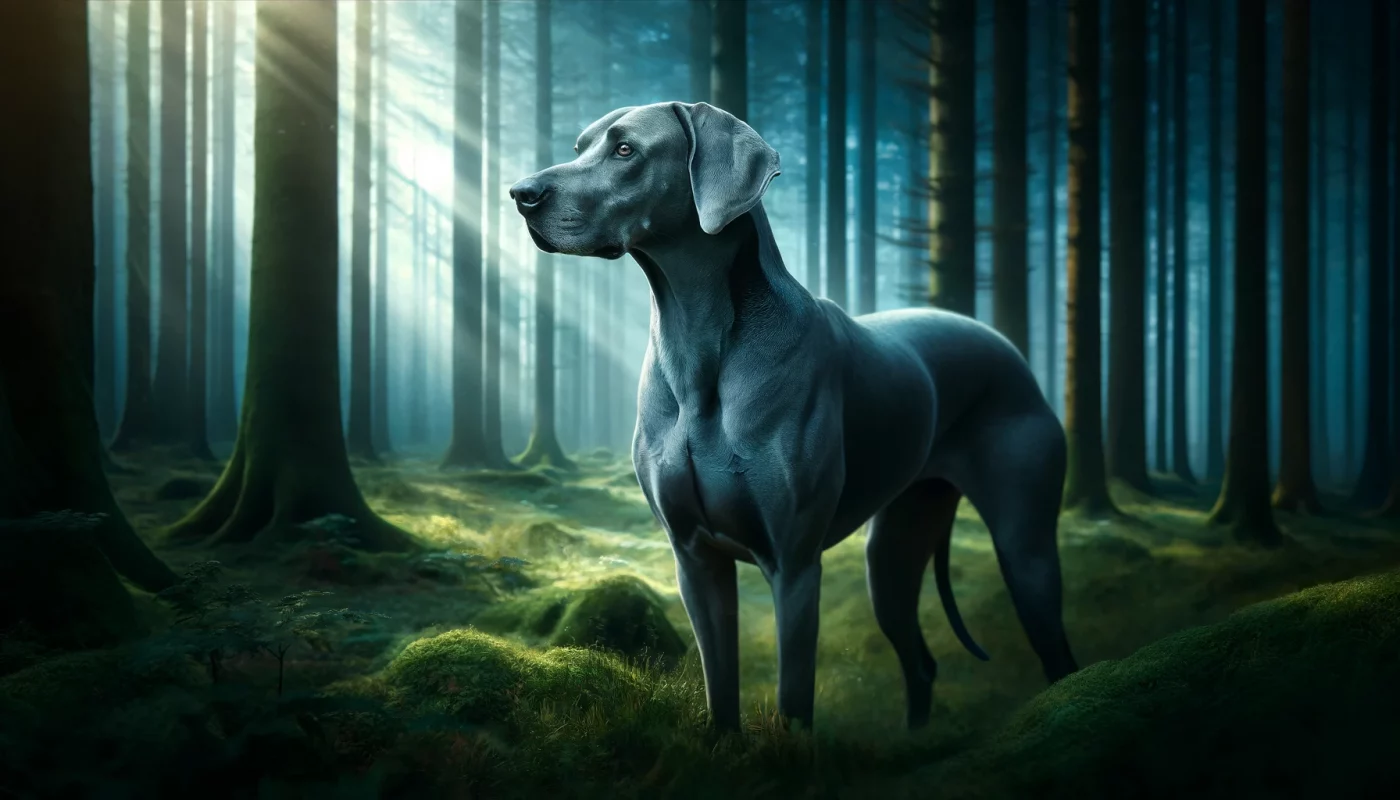Rhodesian Ridgebacks are a majestic breed, originally bred in Southern Africa to hunt large game, including lions. They are easily recognizable by the distinctive “ridge” of hair running along their backs, which grows in the opposite direction to the rest of their coat. This breed comes in a variety of stunning shades that not only enhance their physical appeal but also offer insight into their rich heritage and functional adaptability in diverse environments. Each color variation of the Rhodesian Ridgeback carries its own unique set of qualities and has specific genetic origins. This article explores seven stunning color variations of Rhodesian Ridgebacks, providing a visual and descriptive exploration of each.
1. Light Wheaten

The light wheaten Rhodesian Ridgeback is one of the most common color variations within the breed. This shade is a pale, sandy color that reflects the dog’s historical environment—blending seamlessly into the African savannah. This color not only provides camouflage but also helps in heat reflection under the harsh sun. Dogs with this coat are admired for their sleek and almost golden appearance, which glistens beautifully under sunlight, making them a picturesque feature in any landscape.
2. Red Wheaten

A shade deeper than light wheaten, the red wheaten Rhodesian Ridgeback carries a rich, reddish hue that echoes the vibrant earth tones of Africa. This color variation is highly sought after for its striking appearance and the way it highlights the muscular build of the breed. Red wheaten Ridgebacks are often perceived as embodying the classic look of the breed, with their deep color providing a stunning contrast to their dignified and alert expressions.
3. Dark Wheaten

Dark wheaten Rhodesian Ridgebacks possess a deeper, more intense shade of wheaten that can sometimes appear almost brown. This color variation offers excellent camouflage in darker, denser terrains. It is less common than the lighter wheaten shades but is equally breathtaking. Dark wheaten dogs often have a profound presence, with their coat color enhancing the regal and robust physique that the breed is known for.
4. Wheaten with White Markings

While not a color variation per se, wheaten Ridgebacks can occasionally exhibit small white markings, typically on their chest and toes. These markings do not conform to the breed standard for show dogs but are nevertheless admired by many for adding unique character to the dog’s appearance. The contrast between the pale markings and the primary wheaten color can be quite striking, especially on a well-conditioned, athletic body.
5. Brindle

Brindle Rhodesian Ridgebacks are quite rare and feature a mix of wheaten with streaks of darker striping. This pattern is unique among Ridgebacks and is not recognized in every country’s breed standard. The brindle pattern is a dramatic and visually captivating variation, offering a tapestry of colors that accentuates the dog’s muscular ripples and the distinctive ridge along their back.
6. Black Mask

Some Rhodesian Ridgebacks may exhibit a black mask, which is a genetic trait where the fur on the face is darker than the rest of the body. This striking contrast enhances the expressive, keen eyes of the Ridgeback, making their facial expressions even more pronounced. The black mask can appear in any of the wheaten shades, adding an extra layer of depth and intrigue to the dog’s overall appearance.
7. Blue

The blue Rhodesian Ridgeback is a highly unusual and controversial color. This grayish shade results from a dilution of the black pigment and is not widely accepted in the breed standards. Despite its rarity and the debates surrounding its acceptance, blue Ridgebacks are admired by some for their unique and ethereal appearance, which stands out starkly against the more traditional earth tones of the breed.
Each color variation of the Rhodesian Ridgeback contributes to the breed’s reputation for beauty and versatility. Whether blending into the African wilderness or standing out in a show ring, these colors reflect the adaptability and resilient spirit of the Ridgeback. While some colors are staples within the breed, others offer a glimpse into the genetic diversity and evolving aesthetics of these magnificent dogs. The Rhodesian Ridgeback continues to captivate dog lovers around the world, not only with its brave and loyal temperament but also with its dynamic and stunning array of coat colors.
Frequently Asked Questions About Rhodesian Ridgeback Colors
1. What are the standard coat colors for a Rhodesian Ridgeback?
The Rhodesian Ridgeback typically displays shades of wheaten, ranging from light to dark. The standard recognizes these colors because they historically provided camouflage in their native African landscape. Light wheaten is a pale, sandy color that reflects sunlight and heat, ideal for the hot African climate. Red wheaten offers a richer, copper tone that mirrors the African earth, while dark wheaten appears closer to a deep, golden brown. These colors not only serve functional purposes but also enhance the Ridgeback’s majestic appearance.
2. Can Rhodesian Ridgebacks have black or grey coats?
True black or grey coats are not standard or recognized in the Rhodesian Ridgeback breed. The coat color is genetically predetermined to be within the wheaten spectrum. However, some Ridgebacks may display a greyish or blue tint due to a dilution gene, which is considered highly unusual and not typically desirable within breed standards. This dilution can lead to what is sometimes referred to as a “blue” Rhodesian Ridgeback, but such colors are rare and often result from specific breeding choices.
3. What does a “red wheaten” Rhodesian Ridgeback look like?
A “red wheaten” Rhodesian Ridgeback has a warm, reddish-brown coat that is darker and richer than the standard light wheaten. This color can range from a deep, rusty hue to a more vibrant copper tone. The red wheaten color highlights the dog’s muscular build and gives the Ridgeback a regal and striking appearance. This color variation is highly valued for its beauty and the way it exemplifies the breed’s physical characteristics.
4. Are white markings acceptable on a Rhodesian Ridgeback?
White markings on a Rhodesian Ridgeback are not typically desired according to the breed standard, but they are allowed in small amounts. These markings can usually be found on the chest and toes and should be minimal. While larger or more prominent white markings might disqualify a Ridgeback in a show ring, they do not affect the dog’s abilities or health. Many owners find these unique markings charming and distinctive.
5. How common is the brindle pattern in Rhodesian Ridgebacks?
The brindle pattern is very rare in Rhodesian Ridgebacks and is not recognized by most breed standards globally. Brindle Ridgebacks have a base coat of wheaten with stripes of darker fur. Because the Ridgeback was bred for hunting and companionship in Africa, their coat colors were selected to blend into the natural environment, making the high contrast of a brindle pattern historically undesirable.
6. What is the significance of the black mask in Rhodesian Ridgebacks?
The black mask on a Rhodesian Ridgeback is a darker pigmentation that covers the muzzle and sometimes extends up to the eyes. This is a genetically inherited trait and does not affect the overall coat color, which remains within the wheaten spectrum. The black mask can add a striking contrast to the dog’s face, emphasizing its expressive eyes and noble demeanor. It does not impact the dog’s health or capabilities.
7. Can environmental factors affect the color of a Rhodesian Ridgeback’s coat?
Environmental factors such as sun exposure and diet can influence the shade of a Rhodesian Ridgeback’s coat but not the actual color. Prolonged sun exposure might lighten the coat slightly, while certain nutrients can enhance coat health and vibrancy. However, these changes are generally subtle and do not alter the dog’s genetic color disposition.
8. Do Rhodesian Ridgeback puppies change color as they grow?
Rhodesian Ridgeback puppies can change in shade as they mature but will generally stay within the color range they were born with. Puppies may darken or lighten slightly as their adult coat comes in. The final adult color is typically evident by the time they are about two years old, which is when their coat fully matures.
9. How are different coat colors inherited in Rhodesian Ridgebacks?
Coat color in Rhodesian Ridgebacks is inherited genetically. The gene for wheaten color is dominant, which is why it is the most common color seen in the breed. The exact shade of wheaten can vary based on the genetic combination inherited from both parents. Less common colors like the diluted “blue” or the rare brindle pattern involve more complex genetic traits that are not dominant.
10. What is the rarest color found in Rhodesian Ridgebacks?
The rarest color in Rhodesian Ridgebacks is the blue or grey shade, which results from a dilution gene affecting the typical black pigment in the coat. This color is not recognized by most breed standards and is rare due to selective breeding practices that prioritize the traditional wheaten shades. The blue color is controversial and not widely accepted as a standard or typical appearance for the breed.
 Toledo, United States.
Toledo, United States.